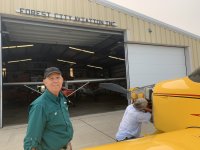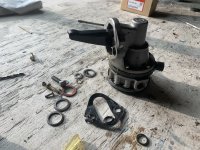MacCool
Well Known Member
Lycoming IO-320 D1A on my RV-9A. I've been getting mild fuel pressure fluctuations, primarily on the ground when the engine is hot. Only shows on the gauge, no engine stumbles or other symptoms, but occasional dips into the red on the EFIS fuel pressure gauge. New kavlico pressure sensor recently replaced. My A&P checked with a mechanical gauge and confirmed that there is some pressure fluctuation when hot. This will be the third fuel pump in this airplane in less than 500 tach hours. Previous two pumps have been Tempest pumps AF15473. Our concern is pump cooling. Apparently the cooling shroud most commonly available requires a fair bit of grinding to fit a Tempest fuel pump.
Thoughts on cooling shroud vs a directed scat tube?

Thoughts on cooling shroud vs a directed scat tube?








